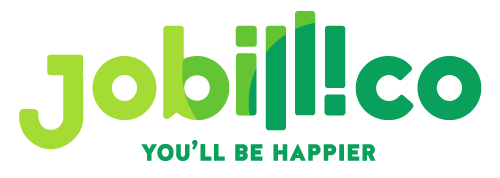Transforming Team Collaboration: The Role of SaaS in Modern Project Management
 Publié le 4 June 2024
Publié le 4 June 2024
Businesses need to understand and utilize the role of SaaS in modern project management and how it is transforming team collaboration.
Modern teams need modern solutions for project management.
With the rapid pace of technological advancements taking place all around us, there’s never been a better time for more flexible and leaner collaboration across all work environments.
Meanwhile, with the evolving landscape of project management and team collaboration, the importance of adopting modern tools for enhanced efficiency has never been greater.
In this article, we dive deeper into the role of software-as-a-service (SaaS) in modern project management as a worthwhile solution to traditional project management challenges and examine how it is transforming team collaboration.
Challenges in Traditional Project Management
Traditionally, project management was quite a linear process, following the waterfall model.
Through it, teams would collaborate on a set of tasks consecutively, meaning less scope for flexibility and adjustments according to client needs.
Other challenges of traditional project management include:
- Poorly detailed designs
- Lack of performance management systems (time, costs, productivity, quality, customer satisfaction, etc.)
- Sloppy coordination between teams and stakeholders
- Lack of adherence to deadlines due to the use of obsolete methods
- Inefficient planning, control, and management of production
- Lack of transparency between parties involved resulting in fragmented, hierarchical teams
- Inadequate collaboration due to hindered communication
- Lengthy problem detection processes
- Unilateral efforts driven by individual self-interest and work done in isolated silos
- Steep and long learning curves with few knowledge-sharing mechanisms to be used during the next project’s implementation
All this has led to a transformation in project management and the need for more collaborative and flexible solutions has arisen.
The Rise of SaaS in Project Management
With collaboration being a central pillar of modern project management, SaaS—or software-on-demand—has come to the forefront of this process.
SaaS, through its cloud-based collaborative nature, is capable of addressing major project management concerns.
Technology’s ability to be fast, accessible, and streamline efforts means that teams can now be much more productive and efficient given the resources they are provided with for a particular project.
This agility and leanness gives these teams an advantage and it enables businesses to compete and scale more effectively.
The use of SaaS in project management is only going to continue rising.
Looking back, the SaaS industry has seen a continuous uptick that’s characterized by growth that’s tripled in size over the past five years alone.
This is not expected to slow down any time soon and businesses managing teams and projects will be well-positioned to take advantage of all the benefits software-as-a-service (SaaS) offers.
Collaboration Features in SaaS Project Management Tools
One of the very first aspects that a quality SaaS project management tool should possess is features that enhance collaboration.
This often means that teams must have the tools to communicate effectively to ensure that there are no misunderstandings and that projects are carried out smoothly.
Such tools can include communication technology such as instant messenger for teams or Kanban boards, and other agile project management tools.
The ease of communication and the visualization of tasks involved in a project enables project managers to better allocate resources and time to aspects of the project that need it the most.
Remote Work and Virtual Collaboration
Remote work has become the norm in many industries, and continues to transform team collaboration.
Spurred on by the Covid-19 pandemic, it is now a fixed feature of many teams across the globe.
However, it is essential for these teams to be able to communicate effectively and retain the momentum that physical interactions and communication hold.
While it is not impossible to collaborate virtually with remote teams, some best practices in this regard include:
- Good communication
- Accountability
- Empathetic listening
- Encouraging creativity
- Recognition of successful teamwork
- Knowledge sharing
- Balancing individual vs. team identity
- Using the right technology
Enhancing Productivity and Efficiency
SaaS tools have incredible potential to streamline workflows and boost team productivity through integrations and automation features that contribute to efficiency – all without coding or, in other words, with no-code.
When a team has the right tools at their disposal, they are able to carry out faster iterations, meet more frequently to discuss stakeholder feedback via feedback system, address the necessary changes, and lead to a project’s completion in a timely manner.
As a result, businesses benefit greatly from these efficiencies, meaning that they can produce more and in less time. This is one of the biggest impacts of the role of SaaS in modern project management and transforming team collaboration.
In addition, they can better address customer requirements and expectations, meaning a greater strengthening of the business’ reputation as a sound product or service provider.
Furthermore, SaaS tools that allow QR code integrations streamline accessibility to essential documentation and resources. Team members can scan barcodes and access the needed information without effort.
This, in turn, results in more business, greater authority and trustworthiness as a brand, and greater profitability.
Ultimately, Saas tools in team project management facilitate strong business growth and efficiencies that traditional models do not offer due to their sluggish and cumbersome nature.
Real-Time Communication and Transparency
Modern project management, through lean and agile methodologies and models, count on team communication for projects to materialize in the most effective and efficient way possible.
This communication can take place through regular meetings, iterations, sprints, and scrums.
When all the teams are able to put their heads together as and when the need arises, they can come up with more creative solutions, using the team’s talent to its full potential.
However, with communication, it’s important to ensure that it is available constantly and in real time to ensure sound project management.
When teams communicate effectively this way, they can foster a greater sense of transparency.
And transparency is crucial for every team member to better understand their roles, responsibilities, and tasks.
Where SaaS tools come to the fore is by ensuring that teams can have fully open, real-time channels of communication through centralized platforms that enable them to get the job done.
This is irrespective of whether they’re working in an office or from a remote location. This allows these tools to be in the position of transforming team collaboration.
Customization and Scalability
It is worth noting that teams involved in project management and execution should work with customized SaaS solutions for different project needs.
This means it is essential to have SaaS tools that can fit around your team’s unique requirements.
Whether it’s a communication platform, customer relationship management software, sales or accounting software, or anything else, customized SaaS tools should be a priority to help businesses achieve their scalability goals.
As teams grow, the software solutions should grow with them.
This means carefully investing in solutions that are capable of adjusting and adapting to your organization’s growth needs.
For example, if your staff increases and you need more server space, speed, and better privacy for your communication services, the tool you use should be able to meet your needs. You don’t need to think about that, they will choose the right hosting service for them and provide you with these resources.
The Future of SaaS in Team Collaboration
The future of SaaS in team collaboration is bright.
However, with new tools and technologies being developed almost on a daily basis, it’s worth considering some predictions and trends for the future of your organization and your project management needs.
Emerging technologies and their potential impact on your business could be significant. It is important for professionals in all industries to understand the role of SaaS in modern project management and transforming team collaboration.
Here’s what you should look out for in this regard:
- Artificial intelligence (AI) tools: These tools can help assess project risks, better allocate resources, manage mundane and repetitive tasks for your team, offer real-time insights into project performance, etc. In addition, they can help project managers identify patterns in project performance so that they can make more informed decisions, resulting in improved forecasting of project outcomes.
- Technology tools: These non-AI tools are capable of assisting teams with real-time team communication, fostering team collaboration, whether it’s on-site or remotely. Furthermore, these tools can help facilitate document management, track resources, and enable their more efficient allocation. In many cases, SaaS tech tools are available through mobile apps, which allows teams to stay connected and productive, no matter where they are.
- Data-driven decision making: Many SaaS tools can help project leaders and managers leverage data analytics and reporting functionalities that help them extract valuable insights from project data during the product discovery phase, for example. This means that they can spot patterns, monitor progress, predict risks—all this to optimize a project’s performance. This is typically achieved through visualizations, dashboards, and predictive analytics reports to gain a holistic overview of the project’s performance and identify areas for improvement or pivots.
- Virtual reality (VR): Through these technologies, complex project tasks are streamlined. Teams can visualize and simulate project designs, enabling them to identify potential issues and test scenarios in a virtual environment to reduce rework while improving project planning and execution.
- Going green in project management: Focusing on environmentally sustainable practices is another key trend in SaaS project management going forward. As organizations increasingly begin to integrate sustainability into their projects, they need to consider aspects such as reducing their carbon footprint, conserving energy and resources, and ethical sourcing throughout a project’s lifecycle.
- Remote and dispersed teams: Remote work is expected to be a continuing trend that we see in project management as organizations source talent from all corners of the globe to create power teams that truly deliver outstanding results. This is where the role of mobile-friendly SaaS project management tools and techniques will play a huge role. Other types of supporting software to help such teams perform include video conferencing software, cloud-based document sharing, virtual whiteboards, etc.
Conclusion
SaaS tools should be a staple of modern project management because the benefits they bring are enormous for any business. Whether you’re looking for enhanced efficiency or improved collaboration, these tools can streamline project management processes and result in an improved bottom line as teams become greater and more adept at managing tasks, risks, projections, and more. This is why it’s important to understand the role of SaaS in modern project management and transforming team collaboration.







